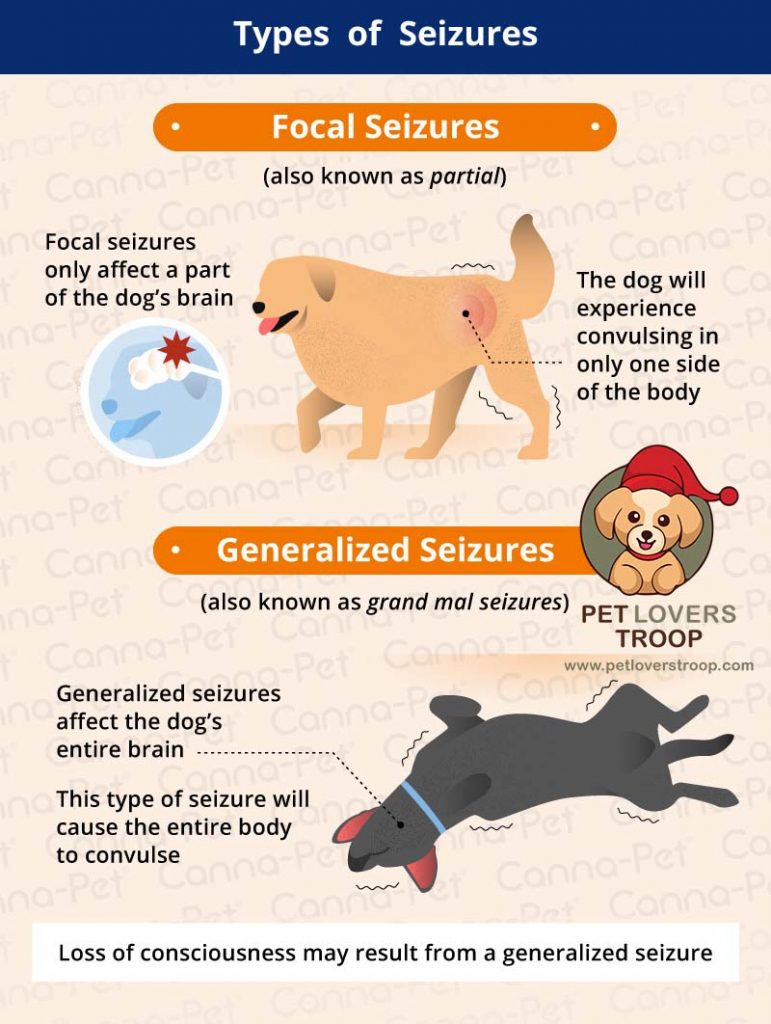You see your dog wagging his tail and playing happily. But then he suddenly flops to the ground and goes into a state of epileptic seizure. It may be traumatic for any dog parent, but the real question is: Why does it happen, and how can you react in such situations? Let us discuss more on epilepsy in dogs.
What are epileptic seizures?
The other common name for epilepsy in dogs is fit. It is important to know that an epileptic seizure is a sign of a disease. Some of these underlying causes of epilepsy in dogs are easily treatable. On the other hand, some causes of epilepsy in dogs can be lethal. An episode of epileptic seizure can last for a few seconds to several hours.
Pet owners are mostly concerned about whether epilepsy in dogs is lethal. The answers to the question may be scary. Yes, epileptic seizures can cause the death of your pooch. It may not be the case most of the time. But, if diagnosed properly, seizures are controllable and manageable.

What causes a seizure?
In medicine, an epileptic seizure is an uncontrollable burst of neuron activity. This burst of activity in the brain can affect a dog’s behavior. Physically, epileptic seizures may seem uncontrollable or as if your dog is swimming in water. Some of the common causes of epilepsy in dogs include
- Eating poisonous food
- Sudden spike or decline in blood sugar levels
- Diseases in the brain such as encephalitis, head injury, or even stroke
- Kidney disease
- Anemia
How to tell if your dog is having a seizure?
An epileptic seizure in dogs may differ depending on the severity of the condition. Based on this, the seizure symptoms may also vary for every type of epilepsy in dogs. There are a few telltale signs of how you can identify epilepsy in dogs. Experts divide seizure events into three phases.
The Pre Ictal phase
It is the phase when your dog knows that something is about to occur. You will notice your dog clinging to or seeking your attention and may appear nervous and restless. Shaking and drooling is also noticeable symptom. This phase lasts for about a few seconds to a couple of hours.
Read more: Traveling with a cat? Do’s and Don’ts of traveling with your furry friend that you must keep in mind
The Ictal Phase
The Ictal phase is when your dog experiences an actual seizure. During this phase of epilepsy in dogs, they may stare blankly. Sometimes there will be mild shaking of the body too. When the body moves erratically, then your dog is experiencing a grand mal seizure. In this type of seizure, the dog moves his limbs like swimming in water. They may even urinate or defecate. This phase may last from a few seconds to several minutes. A dog enters a state of prolonged epileptic seizure if the episode lasts more than five minutes.
The post Ictal phase
This phase is when the epileptic seizures have stopped. Your dog may look confused or disoriented. The post-Ictal phase of epilepsy causes temporary blindness.
How to Prevent Seizures in Dogs?
Several factors can contribute to the development of epilepsy in dogs. These are called triggers. Triggers can exist in the environment, your dog’s body, or even their food. Identification of triggers is the first step in the prevention of epileptic seizures.
Environmental Triggers
- Herbicides, insecticides, or chemicals for yard treatment
- Extreme hot or cold temperatures
- Poisonous flowers
- Household Triggers
- Scented candles
- Cigar smoke
- Loud music
- Perfume
- Cleaning products such as detergents
- Loud, noisy flashes of light, such as thunder
Food Triggers
- A diet with high salt content
- Food allergies are usually due to low-quality processed food.
Read more: The Right Tricks and Hacks to Deal with Cat Hairballs
Stress Factors
- Sudden change in routine
- Change in eating schedule
- A prolonged period of excitement
- Separation anxiety
- Fatigue of overexertion
How to keep a record of the epileptic seizures?
Keeping a log of epileptic episodes can prepare you for the situation that can occur again. Every time your dog suffers an episode, keep your phone ready to keep track of the following points.
- Date and time of the episode
- Duration of the episode
- Details on what happened
- Frequency of the epileptic seizures
- Recent injury or trauma
- Exposure to any unusual diet or toxin
Keeping track of these helps in knowing how to stop and prevent seizures.

What can you do if your dog is having epileptic seizures?
Seeing your dog having a seizure can be a stressful situation. There are a few things that you can do to help your dog while they are going through the episode. Here are a few tips
Protect your dog – You mustn’t move your dog. Yet, if he is in someplace where he can hurt himself, it is better to move him. It will help him to stay away from harm’s way. To safely move your dog, hold its hind legs and drag them gently. In case, your dog collapses outside, make sure he is not on the main road or water bodies.
Do not touch their mouth – Seizures are rapid and involuntary movements of muscles. Some people believe that dogs swallow their tongues during epileptic seizures. It is a false claim. You mustn’t try to put anything in their mouth. Putting your hand close to their mouths is also not recommended.

Timing the seizure – Checking the time and counting the duration of a seizure can help create a history of your pet. It also makes it easy to report to the vet. A seizure may last for a few seconds to minutes.
Read more: If Your Dog’s Having a Seizure, Here’s What You Should Do
Controlling their body temperature – Epileptic seizures that last 3 to 4 minutes tend to increase the body’s temperature and are called hyperthermia. Wet towels or a cold compress helps control the rise of body temperature. Do not go anywhere near the mouth so the dog does not involuntarily bite you.
Call your vet – If this is a situation you are facing firsthand and are unsure what to do, then calling the VET is the best option. You can keep your vet on call and report to him all the seizure symptoms that you observe. At that particular moment, the vet can guide you on how to handle the situation.
If the seizures last more than 5 minutes, rush your pet to the nearest pet hospital. A dog’s body temperature rises every second they have an epileptic episode. It also causes difficulty in breathing and brain damage.
What to do after the dog has a seizure?
It is an emergency if your dog suffers from epileptic seizures for the first time. It is also the same case for dogs with many epileptic seizures or grand mal seizures. Once the seizure ends, your dog may look confused or disoriented. This period can last from a few minutes to a few hours. During this duration, you may observe the following seizure symptoms in your dog:
- Disorientation
- Weakness
- Temporary blindness
- Difficulty walking
These symptoms can cause your dog to walk or even run into furniture and injure themselves. You must confine your dogs to a specific area so they do not hurt themselves or bite others.
Epileptic seizures treatment in Dogs
Epilepsy in dogs is mostly manageable and curable with the help of medicines. Your vet will start seizures treatment if they meet the following criteria:
- The frequency of epileptic seizures increases more than once a month.
- If one seizure immediately follows the other, a condition known as cluster epilepsy.
- Grand mal seizures which are severe or prolonged.
Read more: Understanding Gastric Stasis in rabbits. How to treat a sick rabbit at home?
Epileptic Seizure Meds for Dogs
The vet will start with a physical examination for epilepsy in dogs, followed by scanning, usually MRI. Once a diagnosis is made, the vet will prescribe epileptic seizure meds. The vet may prescribe phenobarbital, as it is dogs’ most common seizure med. Potassium bromide is also a treatment option. Drugs such as Valium or Midazolam are also effective in cases of epileptic seizures in emergencies.
Bottomline
Epileptic seizures in dogs are a manageable condition. An owner who is calm and prepared to handle the situation will know what to do. Also, prompt medical attention can help manage stressful situations. Remember, watching your dog’s behavior can also be a life savior.
Regular veterinary checkups can help identify the cause of epilepsy in dogs. Once your dog starts on epileptic meds, ensure that you do not skip a dose and continue the visits to the vet.



